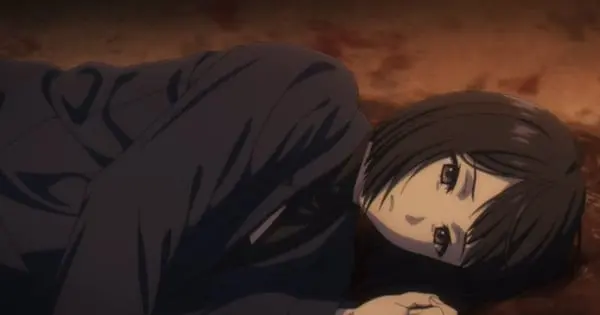The fifth episode of “Rascal Does Not Dream of Bunny Girl Senpai” (often referred to by fans as “Rascal Does Not Dream of Santa Claus” in later series due to thematic shifts), titled “All the Lies I Have For You,” continues to unravel the complexities of Tomoe Koga’s Adolescence Syndrome. This installment focuses on Sakuta Azusagawa’s deepening involvement in Tomoe’s predicament, exploring the social anxieties that fuel her time loops and the emotional toll it takes on all involved, including Mai Sakurajima.
The Perpetuation of a “Fake” Relationship
Picking up directly from the previous episode, Sakuta successfully clarifies the misunderstanding with Mai regarding his situation with Tomoe. Mai, understanding the unique circumstances of Adolescence Syndrome, agrees to allow Sakuta to maintain a “fake” relationship with Tomoe to help resolve her problems, albeit with a warning that she hopes it doesn’t become “serious.”
Over the following days, Sakuta and Tomoe continue to act as a couple, going on pretend dates and engaging in activities typical of an “official” relationship. This extended charade allows Sakuta to gain a deeper understanding of Tomoe’s character. He discovers that Tomoe is exceptionally self-conscious, with a significant portion of her self-esteem tied to the opinions of her friends. She prioritizes fitting in and often follows popular trends, even if it means suppressing her own feelings or being vulnerable to manipulation.
Social Pressures and Malicious Rumors
The episode highlights the immense social pressures faced by teenagers, a core theme within the “Adolescence Syndrome” phenomena. Tomoe’s desire to “fit in” and her fear of social ostracism drive her actions. This vulnerability is exploited when Yosuke, a basketball player Tomoe had previously rejected, begins spreading malicious rumors about her in retaliation for her “relationship” with Sakuta. These rumors depict Tomoe in a compromising and promiscuous light, severely impacting her already fragile self-esteem.
Sakuta, witnessing the distress these rumors cause Tomoe, takes decisive action. He publicly confronts Yosuke, verbally humiliating him and even physically striking him in front of other classmates to defend Tomoe’s reputation. This act, while seemingly rash, demonstrates Sakuta’s unwavering commitment to helping those afflicted by Adolescence Syndrome, even when it puts him in a difficult position. His declaration of his own virginity to discredit the rumors is a notable moment, showcasing his willingness to sacrifice his own image for Tomoe’s sake.
Mai’s Growing Distance and Tomoe’s Developing Feelings
As Sakuta and Tomoe spend more time together, a subtle but significant shift occurs in Sakuta’s relationship with Mai. While Mai initially understands the situation, her interactions with Sakuta gradually become more distant. They transition from face-to-face conversations to phone calls, and eventually, Mai resorts to leaving phone messages that Sakuta doesn’t reply to. This growing distance suggests the emotional strain the fake relationship places on their nascent connection.
Conversely, Tomoe begins to develop genuine feelings for Sakuta. Despite the initial pretense, Sakuta’s kindness, protectiveness, and willingness to stand up for her cause her to become smitten with him. This is subtly hinted at through her unease about the fake relationship ending and her apparent envy when she sees Mai in a commercial. This development sets the stage for potential complications as Tomoe’s “Adolescence Syndrome” might be linked to her desire to avoid the fallout of this developing love triangle.
Understanding Adolescence Syndrome through Tomoe’s Case
Tomoe’s specific manifestation of Adolescence Syndrome – the looping of a single day – is a direct result of her overwhelming desire to avoid undesirable social outcomes. The series posits that Adolescence Syndrome is a phenomenon where a character’s intense personal issues, often stemming from social pressures and the desire to conform, manifest as physical or supernatural ailments. In Tomoe’s case, it’s her deep-seated fear of rejection and social isolation that traps her in a repeating cycle, allowing her to “redo” situations until she achieves a socially acceptable outcome. This contrasts sharply with Mai’s Adolescence Syndrome, where she became invisible due to her yearning for anonymity.
The episode effectively portrays Tomoe as a relatable character, showcasing the anxieties and desperation many teenagers face in their pursuit of acceptance. Her story highlights the detrimental effects of prioritizing external validation over personal feelings and the vulnerability that arises from such an approach. The resolution of her arc will likely involve her confronting these fears and learning to value her own identity, independent of others’ opinions.
Episode 5 serves as a crucial bridge in Tomoe’s arc, deepening the audience’s understanding of her character and the underlying causes of her Adolescence Syndrome. It further solidifies Sakuta’s role as an empathetic and unconventional protagonist, willing to go to great lengths to help those suffering from these mysterious ailments. The subtle shifts in the dynamics between Sakuta, Mai, and Tomoe lay the groundwork for the emotional complexities that will define the remainder of this compelling storyline.








